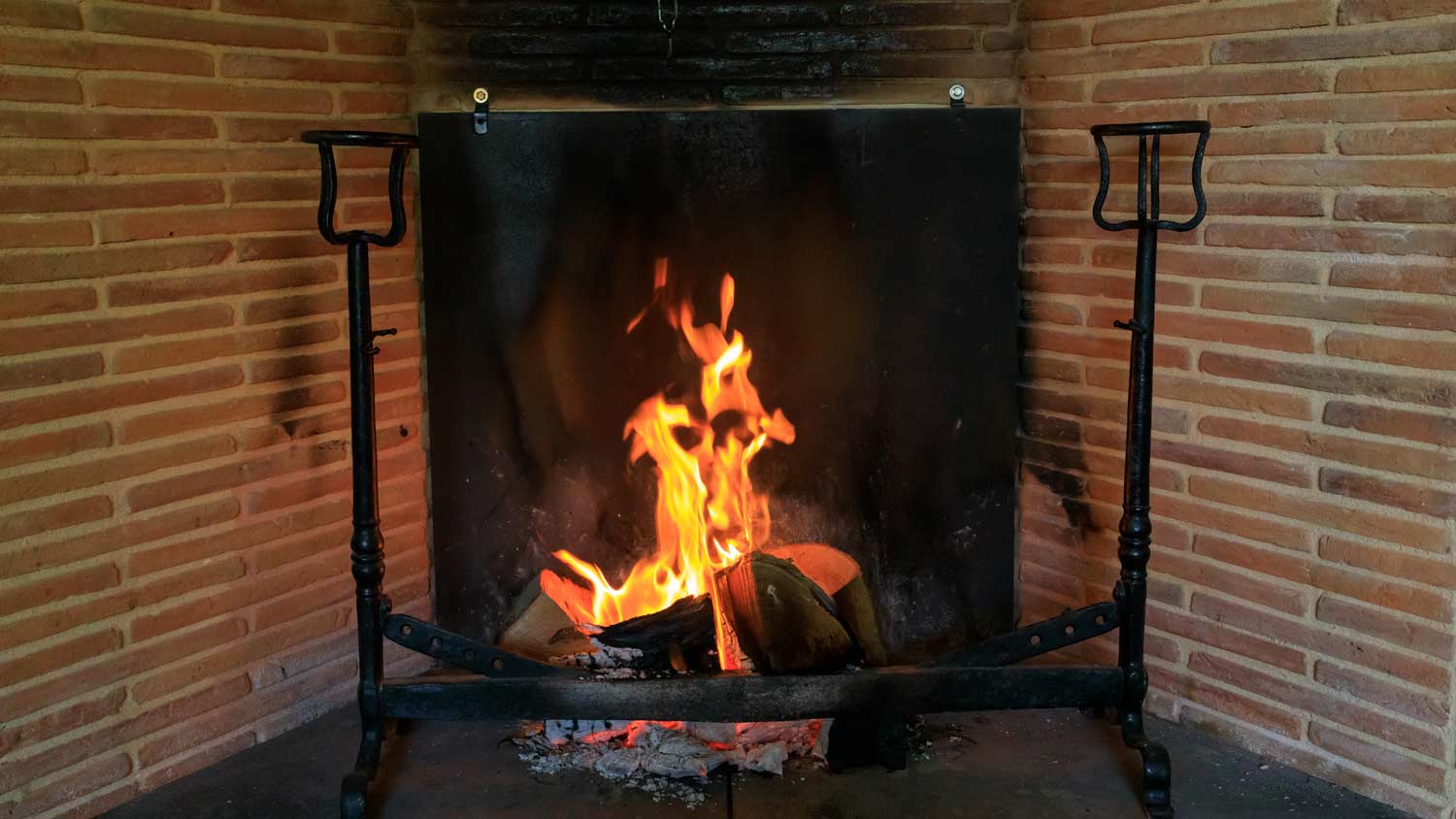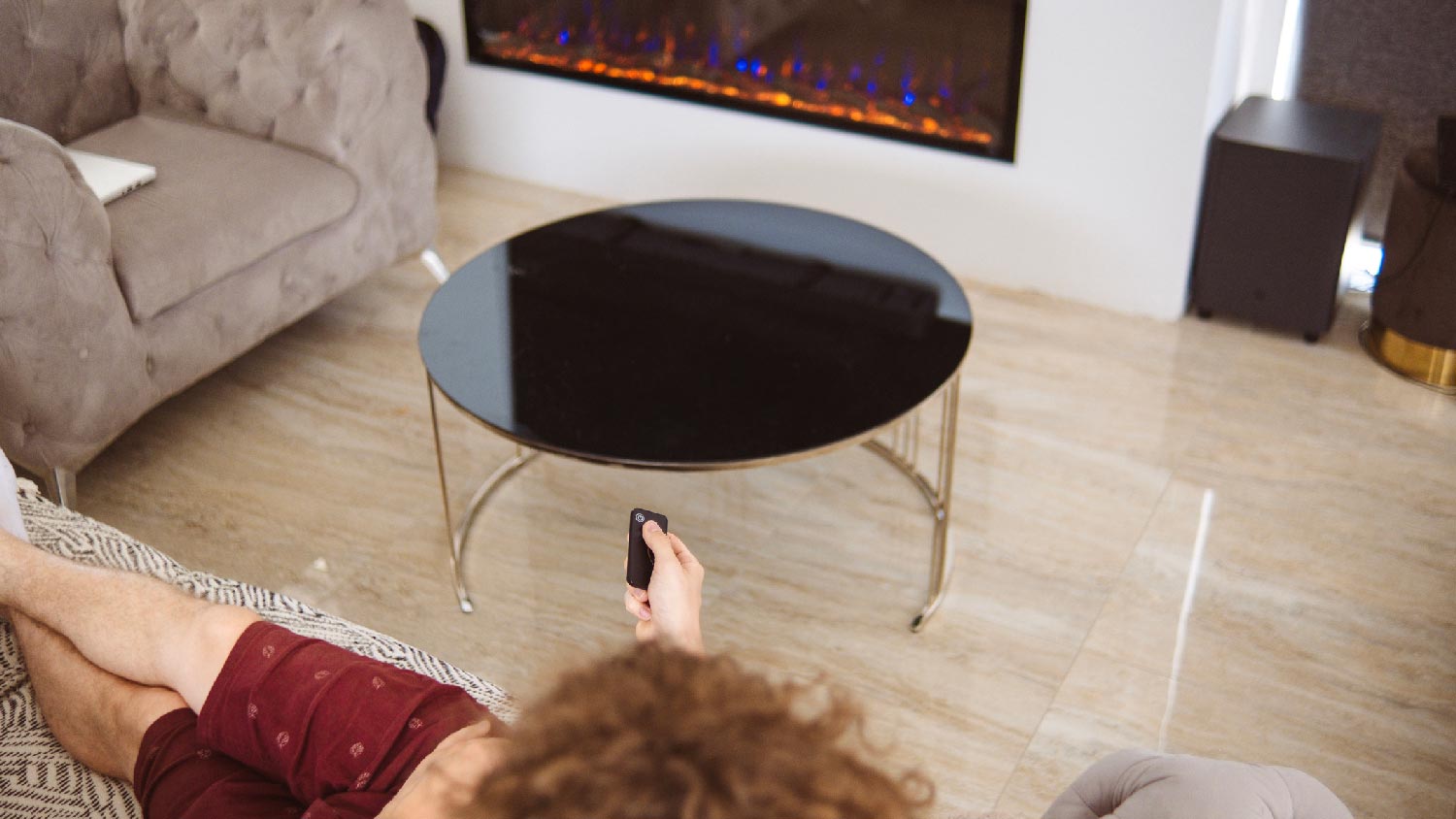
Before installing a gas fireplace insert, it’s important to understand the various cost factors. Here’s how much an average gas fireplace insert costs.
Ventless fireplaces are not dangerous, as long as safeguards are in place


Ventless fireplaces release emissions inside the home rather than outside.
While these emissions are minimal, they may impact indoor air quality and increase humidity levels.
Vent-free fireplaces aren’t ideal if you have allergies or respiratory issues.
Due to these safety concerns, ventless fireplaces are banned in certain places.
Many ventless fireplaces have oxygen and carbon monoxide sensors to keep air quality at safe levels.
If your home doesn’t have a chimney, but you want to enjoy the comforting glow of a fireplace, ventless fireplaces are a popular option. But, are ventless fireplaces safe to use? They are, but you’ll want to hire a pro to install one for you. After a proper installation and with functioning safety systems in place, you can use the ventless fireplace to enjoy worry-free warmth and coziness on a cold night.
Vent-free or ventless fireplaces are heating sources that don’t require a chimney or venting system. Unlike traditional vented fireplaces, ventless models combust indoor air and radiate heat back into your living space. During this process, the fireplace also releases low levels of combustion byproducts into your home.
The term “ventless fireplace” refers to a vent-free fireplace that runs on natural gas or propane. However, there are other types of ventless fireplaces, as well, including electric and ethanol-powered models.
A ventless fireplace doesn’t use a chimney or a vent pipe, but it is able to run without filling your home with smoke or fumes. So how can a ventless fireplace be safe to use?
Technically, a ventless gas fireplace does release combustion byproducts—including carbon monoxide and water vapor—into your home. However, these fireplaces burn so efficiently that the emissions released back into the room are minimal. Plus, ventless fireplaces have certain safety features to keep you and your family safe.
Install carbon monoxide alarms on every level of your home, in central locations, and outside bedrooms. Check all of your carbon monoxide detectors every month, and replace the batteries on a set schedule according to the manufacturer’s instructions.
When installing a ventless fireplace, you must include a few features that deal directly with safe operation.
Oxygen sensor: This sensor measures the oxygen in the room near the fireplace. If oxygen levels drop too low, usually below an 18% concentration level, the unit will shut down automatically.
Carbon monoxide detector: As gas burns, it creates carbon monoxide, which is toxic for humans at a high enough concentration level. Should carbon monoxide escape from the ventless fireplace during operation, having a detector near the fireplace can warn you.
Limited heating power: Most ventless fireplaces operate safely by placing a limit on the number of BTUs they can generate. A limit of 40,000 BTUs is common, but in certain rooms of the home, the limit could be far less.
One of the biggest advantages of ventless versus vented gas fireplaces is the cost. In short, vented models are more expensive since they often include the price of building or repairing a chimney. On average, a ventless gas fireplace costs around $1,500, while a vented version is closer to $5,000. However, you could pay an additional $260 to $820 if you need to run a gas line to the fireplace.
If you’d rather install a non-gas ventless fireplace, here’s how much you’ll pay:
Cost to install an electric fireplace: $200–$2,200
Cost to install a bioethanol fireplace: $700–$1,400
By comparison, installing a wood-burning fireplace costs between $700 and $6,500. However, if you must build the structure from scratch, including all of the ventilation, you could pay around $30,000. Otherwise, if you already have a wood-burning fireplace, the cost to convert a wood fireplace to gas is $500 to $5,500.
Even though ventless fireplaces are safe to use with the right protective measures in place, you still may be unsure whether or not you want to install one. Comparing the pros and cons of ventless fireplaces may help you decide.
Ideal for apartments or homes where chimneys are not available.
Burns at a highly efficient level.
Less expensive than installing a vented fireplace.
No need to maintain or clean a chimney.
Delivers plenty of heat to create a cozier space.
Requires multiple safety features for operation.
Some states and municipalities do not allow them.
Can increase humidity in the room by emitting water vapor.
The extra humidity can amplify any odors that already exist in the room.
Could cause breathing issues for people who are susceptible to irritants in the air.
Your state or local city/county may have specific rules about the installation of ventless fireplaces. Some states and cities/counties have banned the installation and use of these types of fireplaces over safety and gas emission concerns.
Before purchasing or installing a ventless fireplace, be sure to check with your local municipality to see if ventless fireplaces are allowed, the safety measures required, and whether or not you need a building permit for the installation.
Due to potential safety concerns, the installation of this appliance should not be a DIY project. A local fireplace contractor can give you advice about placement and power limits, helping you to keep your ventless fireplace operating safely while following local regulations.
From average costs to expert advice, get all the answers you need to get your job done.

Before installing a gas fireplace insert, it’s important to understand the various cost factors. Here’s how much an average gas fireplace insert costs.

The average cost to remove a fireplace is $4,500, but your overall cost will depend on the type of fireplace, its condition, and other factors.

The cost of removing a fireplace insert depends on the type of insert that’s installed. Read on to learn why electric is cheaper than a gas or wood insert.

If you’re sick of cleaning your wood fireplace, a gas insert is a great alternative. Here’s your step-by-step guide on how to install a gas fireplace insert.

Why is your fireplace smoking? It could signal a bigger issue. This guide will tell you some common causes and how you can fix them.

Is your fireplace remote control not working? Find out five common reasons why it won’t fire up the fireplace, plus tips on how to fix the issue.